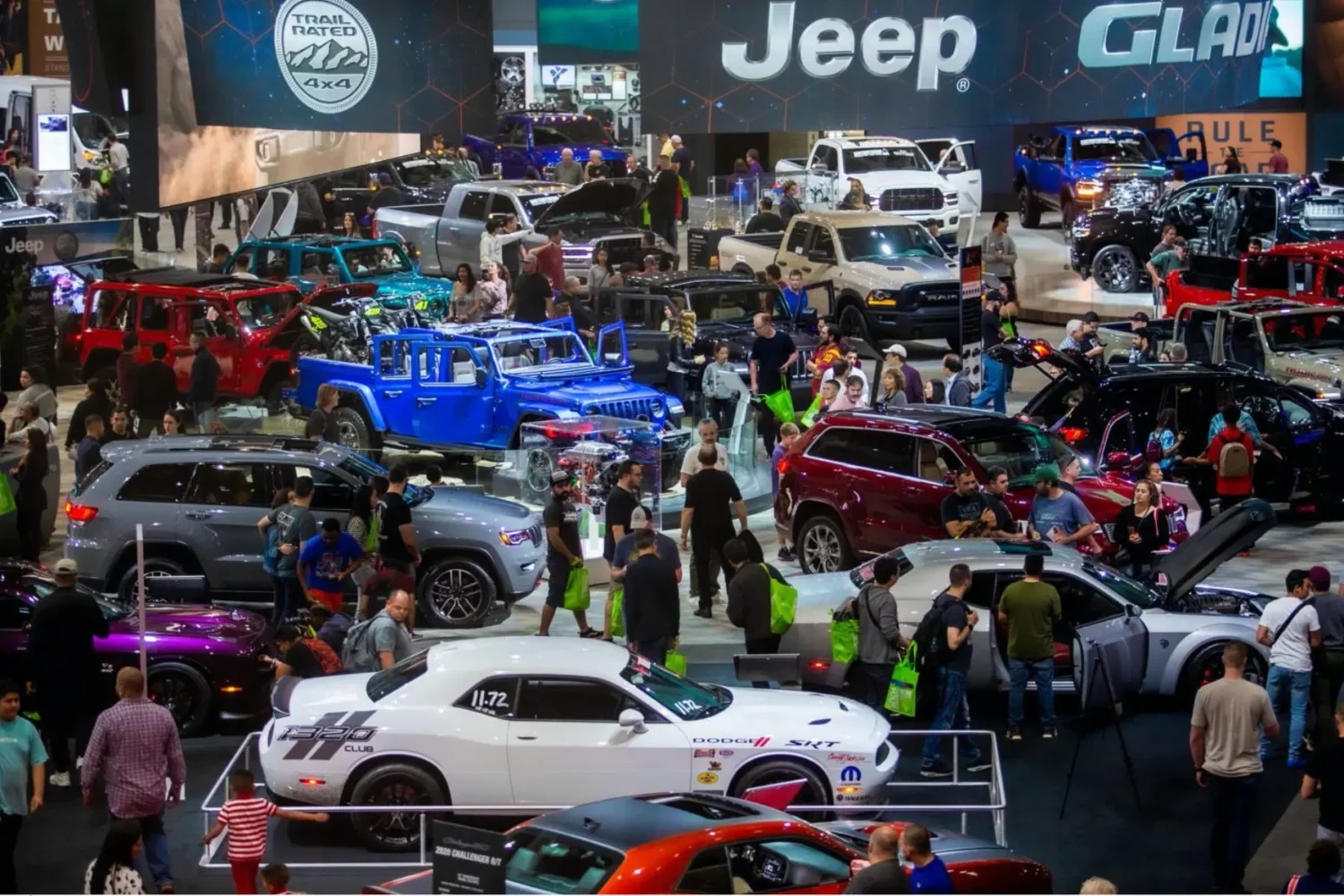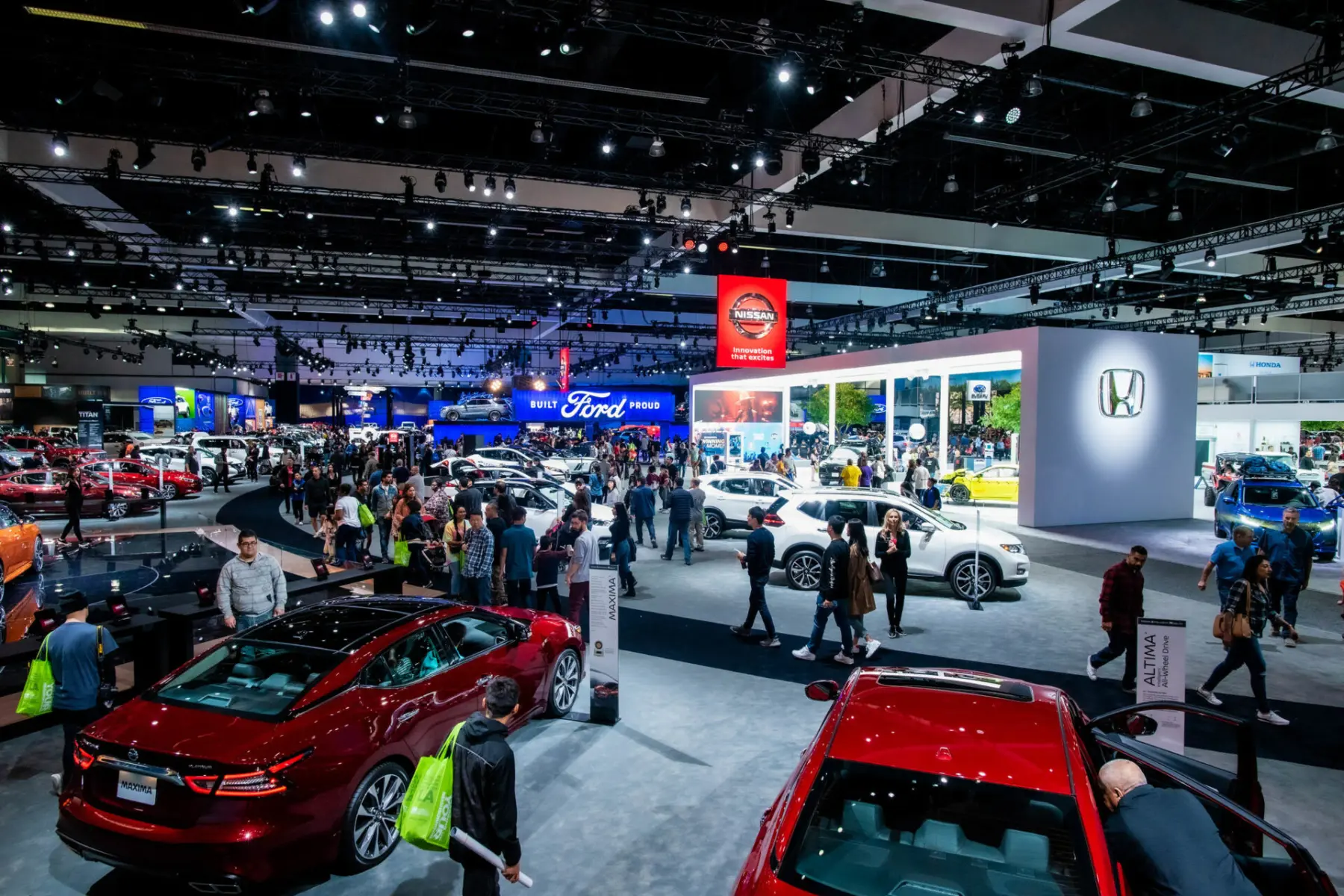Car shows and automotive events play a vital role in shaping the culture and trends of the automotive industry. These gatherings are not only about showcasing the latest models and technologies but also celebrate the rich history and future potential of motor vehicles. They serve as a meeting ground for enthusiasts, manufacturers, and potential buyers, fostering a community bound by a shared passion for automotive excellence. The excitement and anticipation surrounding these events highlight the deep emotional connection people have with cars, making them cultural phenomena rather than mere trade shows.
Over the decades, automotive events have evolved from simple showcases of the newest models to elaborate exhibitions displaying cutting-edge automotive technology and innovation. Early car shows were primarily sales-driven events aimed at exciting potential buyers about the latest models. Today, they have transformed into grand events that highlight significant advancements in hybrid vehicle technology, driverless cars, and green vehicle technology innovations. This evolution reflects the automotive industry’s shift towards sustainability and futuristic design, setting the stage for how cars are integrated into broader societal changes and environmental considerations.

Major International Car Shows
Geneva Motor Show: A Platform for Global Unveils
The Geneva Motor Show stands out as a premier platform for global unveils and is a key highlight in the international car shows calendar. Hosted in Switzerland, this event attracts the world’s leading automotive brands who debut their latest vehicles and future concepts. It is particularly renowned for its luxury and performance cars reveals, making it a pivotal event for witnessing the cutting-edge of automotive design and technology. The show offers a unique glimpse into the global trends shaping the automotive industry and serves as a barometer for the health of the international car market.
Detroit Auto Show: A Hub for Automotive Innovation
Traditionally known as the heartland of America’s automotive sector, the Detroit Auto Show is a critical event where U.S. manufacturers showcase their newest innovations and designs. This show has been a significant stage for demonstrating automotive strength and resilience, featuring everything from practical commuter vehicles to high-powered sports cars. Over the years, Detroit has also become a stage for important discussions about the industry’s future, including talks on electric and hybrid vehicle advancements, making it a critical hub for automotive innovation.
Tokyo Motor Show: Pushing the Boundaries of Technology
The Tokyo Motor Show is highly regarded for its emphasis on futuristic designs and innovations. It is here that many Japanese manufacturers reveal their progress in hybrid technology and other green innovations. The show is famous for its bold concept cars and significant technological leaps, often focusing on how new technologies like AI and automation can integrate into everyday life. Tokyo’s commitment to pushing the boundaries of what vehicles can achieve makes it a must-visit event for those interested in the cutting-edge of car technology.
How International Shows Influence the Global Market
International car shows play a crucial role in shaping the global automotive market. They set the stage for manufacturers to measure consumer reactions to new technologies and designs, which in turn influences future production decisions. Shows like Geneva, Detroit, and Tokyo provide a platform for businesses to forge international partnerships, discuss regulatory impacts, and explore new markets. The feedback and media coverage generated at these events often dictate market trends and consumer preferences, underscoring the significant influence these exhibitions have on the automotive industry’s global dynamics.
Hybrid Vehicles and Emerging Automotive Technology
The Rise of Hybrid Vehicles in Mainstream Markets
The ascendancy of hybrid vehicles in mainstream markets is a testament to significant shifts in consumer preferences and a deeper commitment to sustainability. Today, hybrids are celebrated not just for their environmental benefits but also for their performance and cost-efficiency. Car shows around the globe are increasingly spotlighting hybrids as central attractions, highlighting the latest hybrid vehicle advancements that combine internal combustion engines with electric motors. This dual-engine approach offers a reduction in fuel consumption and emissions while maintaining or even enhancing vehicle performance. Automakers are capitalizing on these benefits to appeal to a broader audience, making hybrids a prominent feature in their lineups.
Innovations in Hybrid Technology at Automotive Events
Automotive events are key arenas where the latest strides in hybrid technology are brought to the forefront, allowing manufacturers to showcase the evolution and integration of more sustainable, efficient driving solutions. These events highlight significant technological advancements, influencing consumer perceptions and industry standards alike.
- New Hybrid Systems: Manufacturers often unveil new or improved hybrid systems at these events, emphasizing enhancements in fuel efficiency and reduced emissions. These systems are designed to deliver robust power and dynamic driving experiences without the environmental impact of traditional combustion engines.
- Advances in Battery Technology: A regular feature at automotive events is the introduction of advanced battery technologies, like lithium-ion and solid-state batteries. These innovations offer higher energy densities, which translate to longer ranges and shorter charging times, addressing two of the most common consumer concerns regarding the best hybrid cars.
- System Integration Improvements: Recent developments have significantly improved how electric and gasoline systems interact within hybrids. These improvements ensure smoother transitions from electric to gas modes, enhancing the overall driving experience and efficiency.
- Regenerative Braking Enhancements: Innovations in regenerative braking, which captures and reuses energy typically lost during braking, are also highlighted. These enhancements increase the overall energy efficiency of hybrid vehicles, contributing further to their appeal.
- Energy Management Systems: Cutting-edge energy management systems that optimize how energy is distributed and used in the vehicle are also a focus. These systems help improve the efficiency of hybrids, making them not only more economical but also more powerful.
The display of these innovations at automotive events plays a crucial role in educating the public and industry about the capabilities and benefits of modern hybrid vehicles. By showcasing these advancements, manufacturers not only promote the adoption of greener technology but also demonstrate their commitment to enhancing automotive performance and sustainability.
Battery and Fuel Efficiency Developments in Hybrids
One of the most critical areas of research and development in hybrid technology focuses on battery and fuel efficiency. Recent car shows have spotlighted breakthroughs in battery technology that extend the driving range of hybrids, making them more appealing to consumers concerned about the practicality of hybrid and electric vehicles. Moreover, enhancements in fuel management systems are showcased, demonstrating how modern hybrids can achieve remarkable fuel efficiency ratings. These developments not only propel the market appeal of hybrids but also contribute significantly to the industry’s efforts in reducing carbon footprints and adhering to stricter environmental regulations.
Driverless Cars and the Future of Transportation
Autonomous Vehicle Technology Showcased at Auto Shows
At auto shows around the globe, autonomous vehicle technology takes center stage, presenting visions of a future where driverless cars are the norm. These events provide a platform for developers to demonstrate advancements in autonomous systems, including sophisticated sensors, machine learning algorithms, and AI that enable cars to navigate without human input. Showcases often include live demonstrations of obstacle detection, real-time decision-making, and the integration of vehicular communication systems, which are essential for the safe operation of driverless cars. These presentations not only captivate audiences but also spark discussions about the implications and readiness of society for such transformative technology.
How Driverless Cars are Shaping the Future of Driving
The development of driverless cars promises to radically transform our driving experiences, commuting practices, and overall urban planning. The potential for increased safety is profound, as autonomous vehicles aim to reduce human error, which is the leading cause of road accidents. Furthermore, driverless cars are expected to optimize traffic flow, reduce congestion, and free up time for individuals who would otherwise be engaged in driving. The implications extend beyond convenience, suggesting significant changes in how cities are designed and function, with less need for large parking spaces and potentially new forms of urban mobility.

Challenges and Opportunities in Autonomous Vehicle Development
While the progress in autonomous vehicle technology is promising, it also brings substantial challenges that need addressing. Technical hurdles such as how these vehicles perform under varying weather conditions or in complex urban environments are ongoing. There are also significant regulatory and ethical issues to tackle, including how liability is determined in the event of an accident involving a driverless car and how data privacy is managed. Despite these challenges, the opportunities for innovation in safety, mobility, and urban design continue to drive investment and research in this field, making it a regular highlight of automotive discussions.
The Role of Car Shows in Advancing Driverless Technology
Car shows play a pivotal role in advancing driverless technology by bridging the gap between innovators and the public. These events allow consumers to get up close with technologies that might seem remote or futuristic. They also serve as forums for industry leaders, policymakers, and the tech community to collaborate and discuss the pathway for integrating such technologies into everyday life. Feedback from these interactions is invaluable, helping to fine-tune technologies and strategies for broader acceptance and implementation.
Green Vehicle Technology and Sustainability
Green Vehicle Innovations Highlighted at Car Shows
Car shows have increasingly become platforms for showcasing green vehicle technology innovations. These events highlight the latest developments in electric and hybrid vehicles, focusing on how these technologies contribute to reducing environmental impact. Innovations often featured include advanced battery technologies that extend driving range and decrease charging times, as well as the use of sustainable materials in vehicle manufacturing. Exhibitors demonstrate how green technology not only matches the performance of traditional vehicles but often surpasses it, particularly in areas like torque delivery and energy efficiency, making a compelling case for eco-friendly transportation solutions.
Regenerative Braking and Other Efficiency Advancements
One of the key technological advancements often showcased in green vehicles is regenerative braking. This system recovers energy that would otherwise be lost during braking and redirects it to recharge the battery. This technology significantly enhances the fuel efficiency of electric and hybrid vehicles and is just one example of how automakers are improving vehicle efficiency. Other advancements include lightweight construction materials that reduce overall vehicle weight and, consequently, energy consumption. These innovations are frequently highlighted at car shows to illustrate how continuous improvements are being made in the efficiency of green vehicles.
Reducing Carbon Emissions Through Automotive Design
Reducing carbon emissions is a critical goal of modern automotive design, prominently featured in discussions at car shows. Manufacturers are increasingly incorporating design elements that not only appeal aesthetically but also contribute to environmental sustainability. Aerodynamic designs reduce drag, which can significantly decrease fuel consumption and emissions in both conventional and green vehicles. Additionally, the integration of solar panels into some models to assist with battery charging further reflects how car design is evolving to meet ecological challenges, emphasizing that sustainability considerations are becoming as important as mechanical performance in vehicle design.
Car Show Competitions and Awards
Judging Criteria for Car Show Awards
Car show competitions at various car exhibitions serve as a highlight for automotive enthusiasts and professionals, showcasing a rich blend of design, innovation, and craftsmanship. Judges at these events employ a detailed set of criteria to evaluate each vehicle, ensuring that the awards reflect a comprehensive assessment of the cars presented.
- Aesthetic Appeal: This criterion evaluates the visual impact of the vehicle, including its design, color, finish, and overall stylistic execution. Judges assess how the aesthetic elements come together to create a striking and cohesive look that stands out on the show floor.
- Technical Innovation: Vehicles are scrutinized for their incorporation of cutting-edge technology, which may include advancements in powertrain performance, automotive electronics, and sustainable technologies. This criterion focuses on how well the vehicle integrates these technologies to enhance functionality and user experience.
- Historical Accuracy: For classic and vintage models, historical accuracy is a critical component. This involves judging the authenticity of a vehicle’s restoration or preservation, ensuring that it accurately represents the era it comes from, including original parts and accurate color schemes.
- Quality of Workmanship: This aspect of the judging involves a detailed examination of the vehicle’s construction. Judges look for excellence in the build quality, including the fit and finish of components and the attention to detail in the assembly and customization.
- Overall Impact: Beyond individual criteria, judges consider the overall impact of the vehicle. This includes its presence at the show, its appeal to the audience, and its potential influence on future automotive designs or trends.
In the realm of car shows, there’s an interesting dynamic between awards given for aesthetic design versus technological innovation. While the beauty and artistic elements of vehicle design play a crucial role in judging, there is an increasing emphasis on technological advancements. Judges and audiences alike are looking for breakthrough features that push the boundaries of what vehicles can do, such as advancements in hybrid technology or autonomous capabilities. This shift reflects broader industry trends focusing on sustainability and digital technology, positioning these elements as key factors in many competitions.
Concept Cars and Futuristic Designs in Competitions
Concept cars often steal the spotlight in car exhibitions, showcasing futuristic designs and technologies that may influence the next generations of vehicles. These models are a playground for designers and engineers to experiment with radical ideas without the constraints of mass production. Competitions often feature these concept cars to gauge consumer interest and reaction to innovative design languages and technology features. These exhibitions are critical in shaping future automotive trends and can lead to significant technological leaps being integrated into everyday vehicles.
Car shows and automotive events serve as critical junctions where industry leaders, innovators, enthusiasts, and consumers converge. These gatherings are more than just exhibitions; they are vibrant forums for sharing ideas, fostering collaborations, and unveiling groundbreaking automotive technologies. Events like these are instrumental in shaping consumer expectations and pushing the industry forward. They provide a platform for direct feedback between manufacturers and their customers, which is invaluable for guiding future developments. Additionally, these events offer networking opportunities that can lead to partnerships and innovations that might reshape the automotive landscape.

These events are crucial for both celebrating automotive culture and driving it forward, showcasing everything from luxury designs to eco-friendly solutions that could soon become part of everyday life. They are not only about appreciating beautiful cars but also about understanding and preparing for the changes that lie ahead in the world of transportation.




